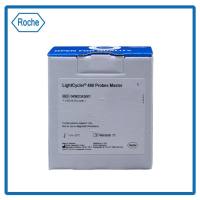Fluorescent In Situ Hybridization of DNA Probes in the Interphase and Metaphase Stages of the Cell Cycle
互联网
528
In the past decade, fluorescent in situ hybridization (FISH) has been used routinely in detecting molecular abnormalities in the interphase and metaphase stages of the cell cycle. Many of the molecular anomalies which are detected in this manner are diagnostic of a prenatal, postnatal, or neoplastic genetic disorder. With the continuous isolation of commercially available DNA probes specific to a particular chromosome region, FISH analysis has become standardized in its ability to detect characteristic chromosomal anomalies in association with genetic and neoplastic diseases. In recent years, FISH has also become automated to accommodate the increased volume of slide preparations necessary for the number of DNA probes needed to detect characteristic molecular anomalies in cancer tissues and bone marrow samples. FISH technology provides essential information to the physician regarding the diagnosis, response to treatment, and ultimately the prognosis of their patients’ disorder. It has become an important source of information routinely used in conjunction with chromosome analyses, and presently to confirm molecular alterations detected by array comparative genomic hybridization (aCGH) analyses. In this chapter we describe the methods for performing FISH analyses in order to determine the presence or the absence of genetic abnormalities which define whether the patient has either a genetic syndrome or malignant disease.









